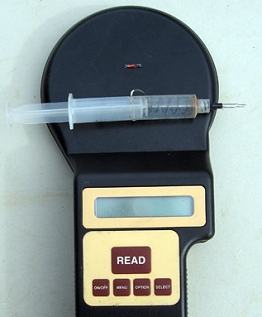Grant: 08-018R
Project Title: Southwest Florida Loggerhead Rookeries as a Collaborative Tagging Experiment: Wider Use of PIT Tags over Six Years to Improve Estimates of Survivorship, Tag Loss and Nest Site Fidelity
Project Manager: Tony Tucker
Organization: Mote Marine Laboratory (Non-Profit Organization)
Grant Amount: $5,580.00
Completion Date: 2008-11-06
Summary: Three loggerhead rookeries of Southwest Florida have ongoing tagging projects of 20 years or more (Casey Key, Manasota Key, and Keewaydin Island) that are consistent with long-term objectives. Female interchange among these rookeries is documented by the Cooperative Marine Turtle Tagging Program (CMTTP) based on recoveries and recaptures determined from Inconel flipper tags. Passive Induced Transponder (PIT) tagging commenced in 2000 on Casey Key, and in 2007 for Manasota Key and Keewaydin Island. These projects employed PIT tagging for its benefits of superior tag retention, in addition to standard double tagging with Inconel flipper tags. This project is a PIT tagging experiment for loggerhead nesting populations shared regionally among three Southwest Florida tagging projects. Meaningful outcomes from the study require a supply of PIT tags adequate to saturate a female population for a span of remigration intervals empirically determined to be between two to six years. The tagging experiment would span the 2008-2013 seasons, be conducted simultaneously by the Casey, Manasota, and Keewaydin rookeries, and request 1200 PIT tags for application to 200 females per year over six years. Because PIT tags have superior retention over Inconel tags, it is expected that PIT tag retentions within remigrant females after 2013 should theoretically allow efforts to scale down to a maintenance level that intercepts just the newly arrived females without PIT tags. By 2014, a reduced level of tagging supplies can be more readily borne individually by the three tagging projects. Results: For the first time, all tagging projects operating in Southwest Florida continued or commenced to use PIT tags in addition to double flipper tagging to enhance the ability to detect female return rates, female survival, remigration schedules, individual reproductive output, and other vital demographic rates. Casey Key study, May 14-July 31, 6.0 km monitored: 135 loggerheads pit tagged (117 new, 18 old, including 3 tagged originally on Manasota and 15 originally tagged on Casey) from 163 loggerhead nest activities; 1 green pit tagged (1 new) out of 1 green nest activities. Manasota Key study, June 1-July 31, 7.4 km monitored: 77 loggerheads pit tagged (65 new, 12 old, including 12 tagged originally on Casey) from 882 loggerhead nest activities; 0 green pit tagged (0 new) out of 0 green nest activities. Keewaydin Island study, May 15-August 15, 7.2 km monitored: 66 loggerheads pit tagged (66 new, 0 old) from 150 loggerhead nest activities;0 green pit tagged (0 new) out of 0 green nest activities. The proposal was based on trends through the 2007 season. However, the positive news is that the 2008 season was higher in terms of overall nests and females. Consequently, the purchased stock of 600 tags is being put out more rapidly (278 deployed in 2008) than we originally estimated for the trends through 2007, but that turnaround can be viewed a positive outcome for documenting loggerhead nesting trends. (Author: Dr. Tony Tucker)
Results: For the first time, all tagging projects operating in Southwest Florida continued or commenced to use PIT tags in addition to double flipper tagging to enhance the ability to detect female return rates, female survival, remigration schedules, individual reproductive output, and other vital demographic rates. Casey Key study, May 14-July 31, 6.0 km monitored: 135 loggerheads pit tagged (117 new, 18 old, including 3 tagged originally on Manasota and 15 originally tagged on Casey) from 163 loggerhead nest activities; 1 green pit tagged (1 new) out of 1 green nest activities. Manasota Key study, June 1-July 31, 7.4 km monitored: 77 loggerheads pit tagged (65 new, 12 old, including 12 tagged originally on Casey) from 882 loggerhead nest activities; 0 green pit tagged (0 new) out of 0 green nest activities. Keewaydin Island study, May 15-August 15, 7.2 km monitored: 66 loggerheads pit tagged (66 new, 0 old) from 150 loggerhead nest activities;0 green pit tagged (0 new) out of 0 green nest activities. The proposal was based on trends through the 2007 season. However, the positive news is that the 2008 season was higher in terms of overall nests and females. Consequently, the purchased stock of 600 tags is being put out more rapidly (278 deployed in 2008) than we originally estimated for the trends through 2007, but that turnaround can be viewed a positive outcome for documenting loggerhead nesting trends. (Author: Dr. Tony Tucker)